Best Glute and Hamstring Exercises for Beginners

Key Takeways
You might have a few unique goals when you start on a fitness journey. Whether it's weight loss, muscle building, or moving your body more, exercise and daily active activities can have many positive effects.
If you're new to the gym and want to start reaping the benefits of muscle-building for your metabolic health and overall well-being, you've come to the right place! We recently shared an article on the importance of upper body training for beginners with a chest and shoulder workout.
Read on to see why building muscle is essential, plus find the best exercises for beginners to build glute and hamstring strength.
What Does Muscle Mass Do For Your Health?
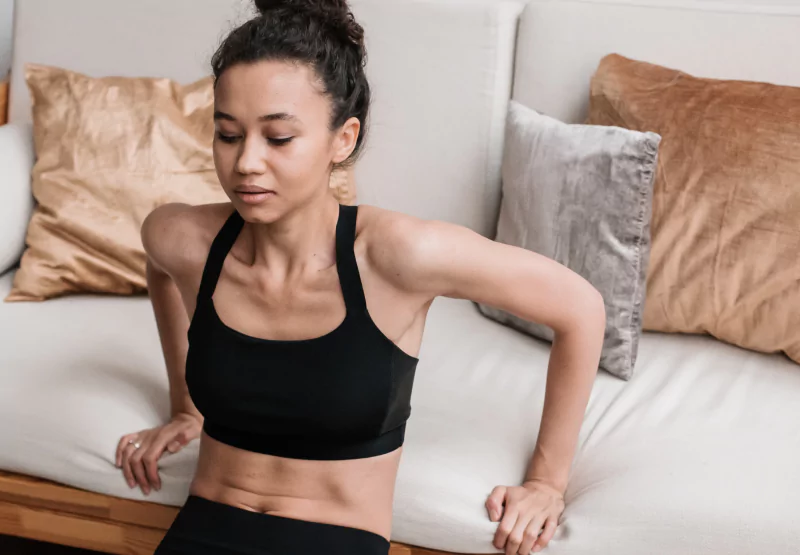
Like any other type of strength training, a lower-body workout routine can help you build muscle. Muscles are more metabolically active and burn more calories at rest than adipose tissue or fat stores, helping to boost your metabolic rate.
Along with boosting your metabolic rate, muscle growth through strength training may help to increase insulin sensitivity, which can support your overall metabolic health. Increased muscle can also support metabolic health by helping to support healthy blood pressure levels.
Research has shown that weight training and muscle building support the musculoskeletal system. Muscle can support healthy bone density and strengthen ligaments, which may help decrease the risk of injury.
However, increasing muscle mass can have other benefits. It has been shown to improve physical self-concept, how you view your physical fitness and body, and self-esteem. Some research also suggests that building muscle can boost cognitive function and help with mental health and stress issues.
Muscle Groups in the Lower Body
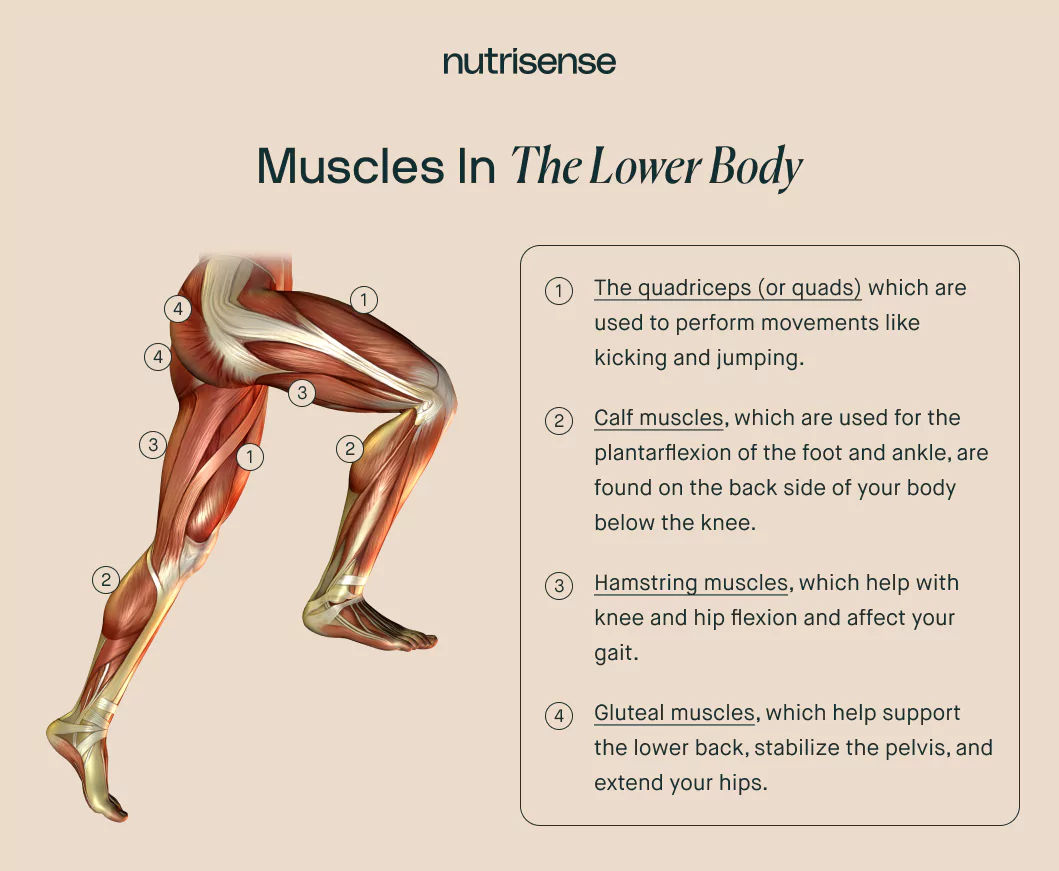
The lower body consists of four major muscle groups, each essential for daily activities and ensuring a stable foundation for performance.
1) Gluteus Maximus: The largest muscle in the body, the gluteus maximus, is key for hip extension and stability. It supports the lower back by offsetting lumbar spine stress and powers movements like standing, climbing stairs, and staying upright. Essential for everyday activities and athletic performance, it provides stability, propulsion, and strength.
2) Gluteus Medius and Gluteus Minimus: Though smaller than the gluteus maximus, the gluteus medius and gluteus minimus stabilize the hip and thigh, especially during single-leg activities like lunges. The gluteus medius aligns and controls knee movements, reducing injury risks, while the gluteus minimus rotates the thigh and stabilizes the pelvis during dynamic movements.
3) Hamstring Muscles: Located at the back of the thigh, the hamstring muscles enable knee flexion and hip extension. They decelerate the body during running, making them crucial for athletes. Strength and flexibility in these muscles help prevent common injuries in running and jumping activities.
Benefits of Leg Day at the Gym
You know by now that muscle building has many benefits for your overall health. But, training your lower body, specifically your glutes and hamstrings, can have its own unique set of benefits.
- Training your posterior chain (muscles on the back of your body) offers numerous benefits:some text
- Prevents potential injuries.
- Supports pelvic alignment.
- Stabilizes the knee joint.
- Strong glutes and hamstrings can:some text
- Reduce joint pain.
- Improve athletic performance.
- Strengthening these muscle groups enhances:some text
Best Hamstring Exercises
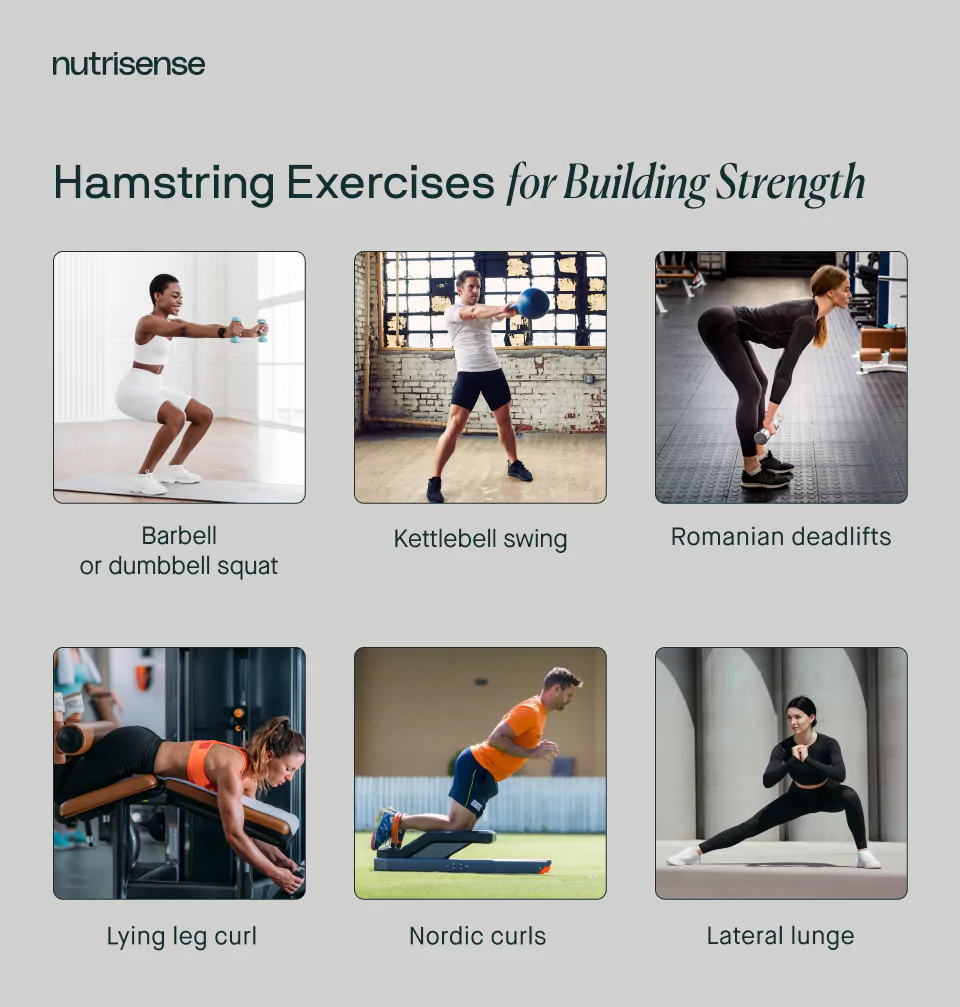
- Barbell/Dumbbell Squat: Engages your hamstrings when squatting to a 90-degree knee angle; keeping your feet flat maximizes muscle activation.
- Kettlebell Swing: This exercise targets your glutes and hamstrings through explosive hip extension and requires a tight core for power and control.
- Romanian Deadlift: This exercise focuses on hip hinge movement to stretch and contract hamstrings, addressing imbalances with grip and stance variations.
- Lying Leg Curl: Isolates hamstrings, promoting knee flexion and comprehensive development; crucial for injury prevention.
- Nordic Curls: Builds hamstring strength and resilience under tension, reducing injury risk.
- Lateral Lunge: Strengthens gluteus medius, minimus, and hamstrings while enhancing multi-plane stability.
Progression Tips: To challenge muscles further, add glute bridges, lunges, step-ups, or resistance tools (bands, ankle weights, plyometrics).
Best Glute Exercises
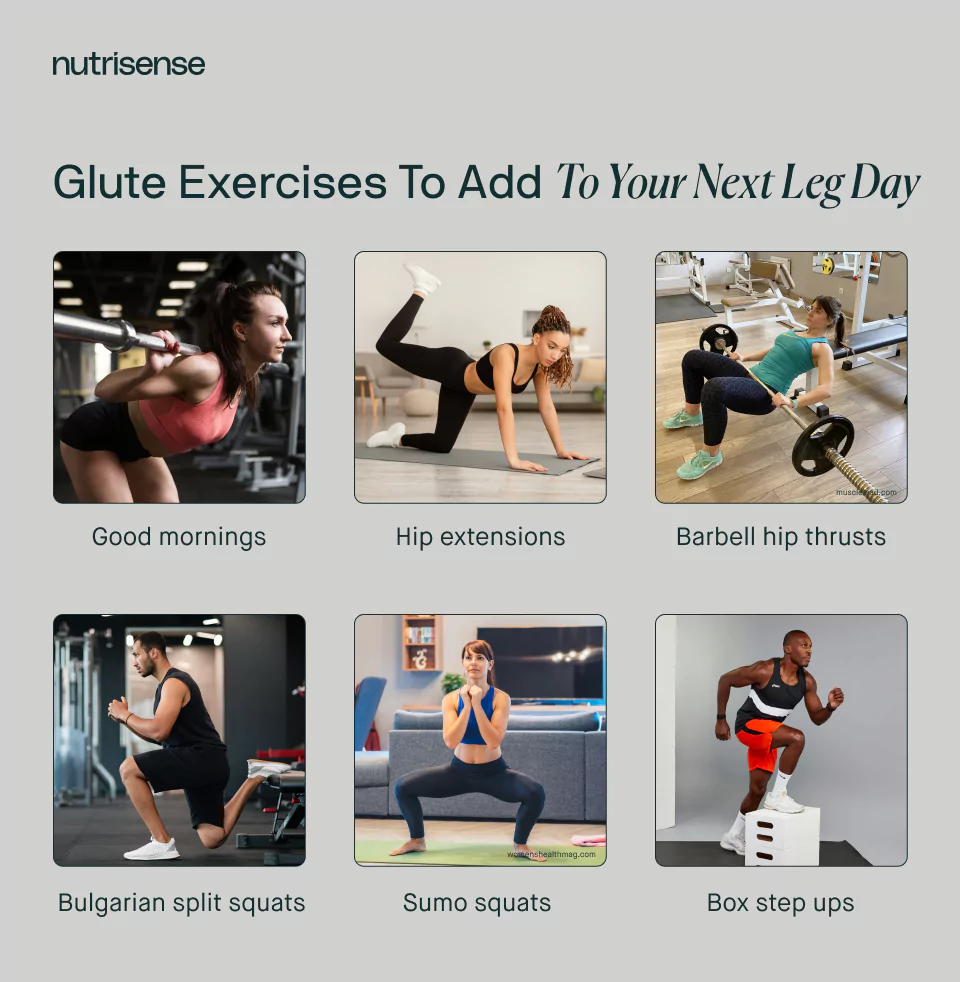
- Good Mornings: Focuses on the hip hinge, engaging glutes with a tight core and upright posture.
- Hip Extensions: Directly targets gluteus maximus; proper range of motion ensures full muscle engagement.
- Barbell Hip Thrusts: Builds gluteal strength and hypertrophy through powerful hip extension; engages gluteus maximus, medius, and minimus.
- Bulgarian Split Squats: Targets glutes deeply, promotes balance, and enhances unilateral strength while improving knee stability.
- Sumo Squats: Wide stance emphasizes gluteus medius, minimus, and inner thighs; deep squat increases engagement.
- Box Step Ups: Works glutes and hamstrings, with higher steps enhancing range of motion and muscle activation.
Try This Glute and Hamstring Workout
Ready to build lower body strength? Here’s a beginner-friendly glute and hamstring workout you can adapt to any fitness level.
- For Beginners: Start with bodyweight exercises until comfortable progressing.
- For Advanced Levels: Add weight progressively as you get stronger.
Before starting a new training program, it may be a good idea to consult a personal trainer or physical therapist to help you better understand proper form. And work with a sports nutritionist to make sure your nutrition and lifestyle is well-optimized too! Regardless of your current level, here's a customizable lower-body workout you can try to get started with your leg day training.
Before You Start
- Prioritize proper form and technique over weight, speed, or intensity to avoid injuries.
- If the routine feels challenging:some text
- Start with a few of your favorite exercises.
- Gradually add other key exercises over time.
- Take rest periods between sets.
- Always listen to your body and adjust as needed.
Start with a Warm Up

First things first, you'll want to start with a warm-up. Research shows that an effective warm-up can be a great way to activate and prep your muscles for your workout. You can start slow with the warm-up to get your heart rate up, get your blood flow moving, prepare your muscles, and reduce injury risk.
Start with 10 minutes of cardio exercise to get your heart rate up. This can be walking or jogging on the treadmill, walking on the stairmaster, or dancing for 10 minutes.
Activation Exercises
Next, you'll want to do a few activation exercises that target your lower body muscles. Activation exercises help your muscles warm up and prepare for the upcoming workout and can also help prevent injury.
Here are three lower-body exercises to start your workout. Complete three rounds of 10 repetitions.
1) Knee Hug
This exercise is as straightforward as it sounds. To do this exercise, you'll want to sit down on your mat and follow these instructions:
- Bend your knees with your hands at the side ("hugging" your knees).
- Lift your feet off the floor slowly.
- Stretch and extend your arms to your side.
- Extend your legs to a 45-degree angle.
- Lean your body back and lift your core, activating your lower body and core for proper stability.
- Return to your original position and repeat 10 times.
2) Glute Bridge

To do a glute bridge for gluteus maximus activation, follow these steps:
- Lie down on your mat, your back on the ground, and your knees bent.
- Plant your feet firmly on the floor and keep your arms at your side.
- Lift your hips off the ground until your knees, hips, and shoulders are in a straight line or "bridge."
- Squeeze your glutes to keep them activated through this movement,t and hold for three seconds.
- Bring your hips back down and repeat the exercise 10 times.
3) Lunge With Elbow to Instep
This is a compound exercise that incorporates a few different movements. Here's how:
- Stand on your mat with legs shoulder-width apart.
- Step your right foot forward into a lunge, squeezing your glutes (keep your left foot's heel slightly off the ground).
- Move your abdomen forward and down, maintaining a straight back.
- Place your left hand on the floor (outside your right foot) for support.
- Bring your right hand to the inside of your right knee and lower your elbow to the floor.
- Push your torso back and return to the starting position.
- Repeat on the other side, completing five repetitions per side.
4) Hip Flexions
This exercise helps activate your hip flexors, crucial in your glute and hamstring muscles. Here's how to do it:
- Stand up straight with your feet under your hips.
- Step one foot back and slightly bend the knee.
- Lower into a lunge, maintaining an upright posture with both knees at 90-degree angles.
- Push off the ground with your front foot to return to a standing position.
- Repeat for ten repetitions on each side.
Lower Leg Workout
After you've warmed up and activated the lower limb muscles, you can move on to the main portion of the lower leg workout.
Complete 10 to 12 reps of the following four exercises, then repeat each one four to five times with a three-minute rest between each round.
Single Leg Romanian Deadlift
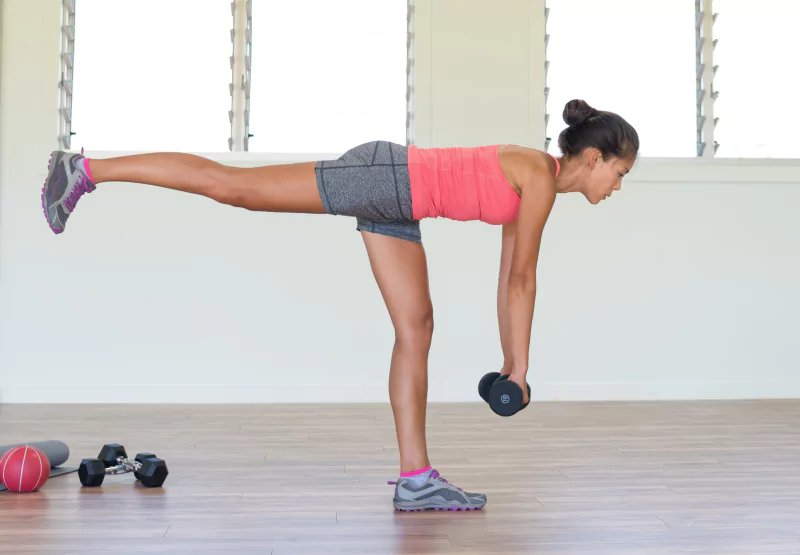
For this exercise, choose light dumbbells if you're a beginner and focus on form and balance throughout the movement.
- Stand with your legs shoulder-width apart.
- Press your right leg and foot firmly into the ground.
- Bend your knees slightly and extend your right arm to the side.
- Perform a forward hip hinge, pushing your glutes backward.
- Move your torso forward until it’s parallel to the ground.
- Lift your left leg, keeping your back straight.
- Engage your glutes by squeezing them to protect your lower back.
- Return to the starting position and repeat 10 times before switching legs.
Conventional Deadlift
The conventional deadlift is a glute workout move that targets your glutes, hamstrings, and lower back. To execute a conventional deadlift, follow these guidelines:
- Start with your feet hip-width apart and the barbell in front of your shins.
- Bend at your hips and knees to grab the bar with an overhand grip, hands positioned just outside your legs.
- Keep your back flat and chest up as you lift the bar by extending your hips and knees, keeping the bar close to your legs.
- Push your hips forward once the bar passes your knees to stand upright, squeezing your glutes at the top.
- Reverse the motion by bending at the hips and lowering the bar in a controlled manner back to the ground.
- Perform 10–12 repetitions, resting adequately between sets to avoid overexertion.
If you find the move monotonous, consider diversifying your routine with other variations, like the sumo or Romanian deadlift. You can also increase the difficulty by using heavier pairs of weights or by adding an exercise band to the movement.
Dumbbell Step Ups
For this exercise, you'll need a step stool (luckily, most gyms have this). You'll want to hold your dumbbells in each hand and step up onto a bench while alternating legs. Here's how:
- Stand with legs shoulder-width apart, holding dumbbells at your sides with palms facing your body.
- Step onto the stool, pushing your body up by lifting the opposite heel off the ground.
- Ensure the foot on the stool is planted firmly.
- Step off the stool, flexing your hip and knee to return to the starting position.
- Repeat 10 times on each leg.
Dumbbell Hip Thrust
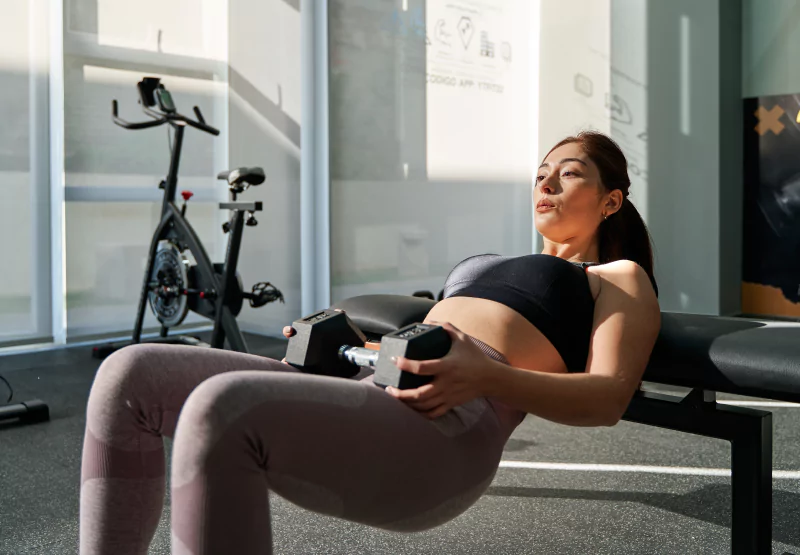
This can be a really effective exercise for building glute strength. You'll need a bench or flat surface to support your back for this exercise.
- Sit on the floor with your back against a bench and feet hip-width apart.
- Tuck your chin for proper form.
- Hold a dumbbell or barbell over your pelvic region, then extend your hips upward, squeezing your glutes and keeping your core tight.
- Lower your hips back to the starting position.
- Repeat 10 times.
Dumbbell Reverse Lunges
This is another compound exercise that targets both your hamstrings and glutes.
- Stand with feet shoulder-width apart and dumbbells at your sides.
- Step backward with your right leg, keeping your body grounded through your feet and heel.
- Return to the starting position.
- Repeat 10 times on each leg.
If you want to add cardio to your movements, consider the walking lunges, which have you moving forward from a neutral position instead of backward. You can also make this exercise more challenging by adding a resistance band or increasing the weight of your dumbbells. Your shoulder blades, hips, and feet should be in line during this exercise. To avoid injury, keep your core muscles engaged throughout the movement, and do not overextend your knees as you step back into each lunge.
Hamstring Curls
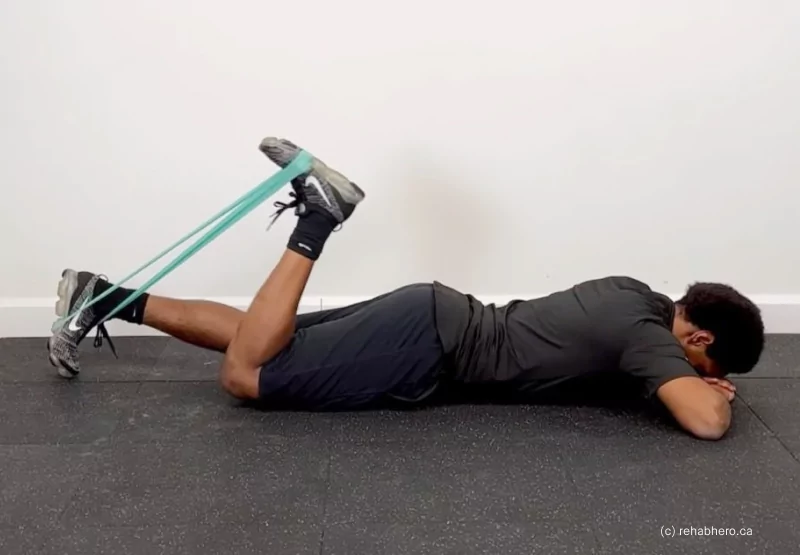
This exercise can be done with a resistance band on the floor or using a lying leg curl machine, which is available at most gyms. Here's how to do it with a resistance band.
- Tie a resistance band to a sturdy object like a bench or pole.
- Lie face down on a mat with the band looped around both ankles.
- Bend your knees, bringing your feet as close to your glutes as possible to create resistance.
- Slowly unbend your knees, returning to the starting position.
- Repeat 10 times.
Squats
Regular squats are one of the most effective lower-body workouts that help to build strength in your quadriceps, hamstrings, and glutes. To perform a squat:
- Stand with feet shoulder-width apart and arms at your sides.
- Push your hips back and bend your knees as if sitting in an imaginary chair.
- Keep your chest up and back straight, ensuring your knees don't pass your toes.
- Press through your heels to return to standing, squeezing your glutes at the top.
- Repeat for 10–12 repetitions.
Try holding a dumbbell or kettlebell at your chest or shoulders to add intensity to this move. You can also try other squat variations, like a pause squat or front squat, to challenge your muscles in different ways.
You can also place your feet wider or closer together to target other areas of your lower body. Your posterior chain muscles, including your glutes, play a crucial role in proper squat form, so ensuring they're appropriately engaged throughout the movement is essential.
Cool Down
Finish your workout with five minutes of stretching, focusing on the muscles you just worked out. Research shows there may not be a significant difference between an active cool-down and a passive one, so you may want to choose which works best. You can also discuss the best cool-down method for your body with your physical trainer.
Find the right Nutrisense programto turn insight into progress.
Find the Best Exercise for Your Needs with Nutrisense
Building strength in your glutes and hamstrings is essential for stability, mobility, and overall metabolic health. But the right routine and combination of specific exercises can be unique to every person. With Nutrisense, you can access personalized support from registered dietitians with specializations in sports nutrition and fitness, who can help tailor your fitness and nutrition plan to your unique goals.
From proper form and exercise guidance to creating balanced, nutrient-dense meal plans, our experts are here to help you maximize your workouts, boost muscle recovery, and improve your metabolic health. Sign up today and take the first step toward building strength and achieving your health goals with Nutrisense!
Go Beyond Glucose Data with Nutrisense
Your glucose can significantly impact how your body feels and functions. That’s why stable levels are an important factor in supporting overall wellbeing. But viewing glucose isn't enough. Nutrisense, you’ll be able to learn how to use your body's data to make informed lifestyle choices that support healthy living.
One-to-one coaching
Sign up to access insurance-covered video calls to work with a glucose expert: a personal registered dietitian or certified nutritionist who will help tailor your lifestyle and diet to your goals.
Monitor and measure what matters
With the Nutrisense CGM Program, you can monitor your glucose with health tech like glucose biosensors and continuous glucose monitor (CGM)s, and analyze the trends over time with the Nutrisense App. This will help you make the most informed choices about the foods you consume and their impact on your health.
Find your best fit
Ready to take the first step? Start with our quiz to find the right Nutrisense program to help you take control.

Amanda is a Nutrition Manager and Registered Dietitian, with a Masters in Dietetics from Stephen F. Austin State University. Originally from south GA, she got her undergrad degree from Texas Tech University. She worked at a hospital in Fort Worth, TX, for 4 years as a dietitian, counseling those living with HIV.




